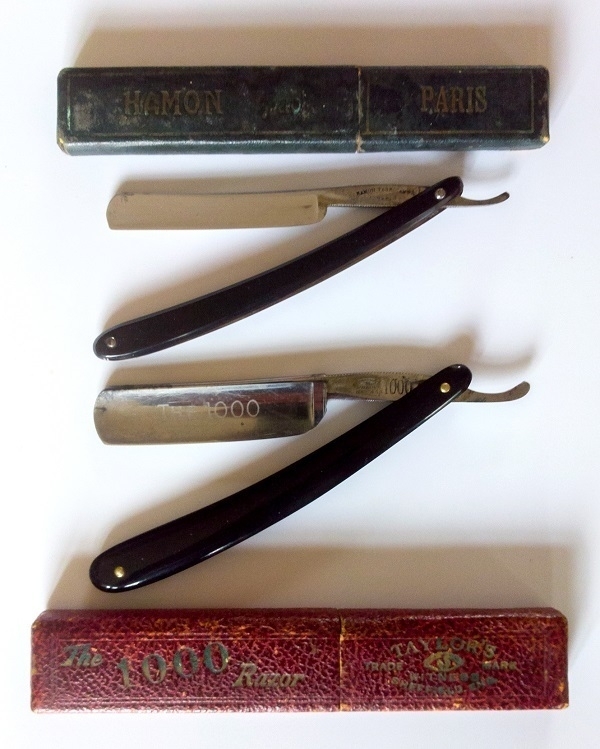Straight Razors

Pictured above are my smallest and one of my largest straight razors, both of which still happen to have their original boxes. The length of such blades (with few exceptions) tends to be a consistent three inches or so, with their size instead reckoned as the distance from spine to edge - traditionally expressed in eighths or sixteenths of an inch. The French-made Hamon razor at the top of the picture is a mere 7/16, while The 1000 razor below it, made by Taylor’s in Sheffield is 13/16. Even skinnier and stouter sizes can be found, but are relatively uncommon.
I spotted the Hamon in an antique shop in Abergavenny back in 2014, but didn’t get around to using it for years afterwards. Stamped on one side of the tang is Hamon Fabricant Paris France, while on the reverse are the numbers 42/13 (the significance of which eludes me). It has a so-called near-wedge grind, which is to say the blade has an only very slightly concave cross-section, not so far off flatly triangular: which makes it a little stiff and unyielding to shave with. The scales (i.e. the handle) are made of what I believe to be pressed horn. I suspect it may date back to the turn of the 20th Century.
The other razor was a 2021 eBay purchase. The 1000 is etched into its blade with 👁️ Witness 1000 stamped on the same side of the tang, and Taylor Sheffield England on the other. The blade is full-hollow ground, meaning its profile is markedly concave and very thin towards its edge, lending it a responsive flexibility in use (if also a certain fragility). Its scales appear to be hardened rubber, aka ‘Vulcanite’ or ‘Ebonite’. My guess is that it’s of inter-war manufacture.
Both razors were inexpensive (around £10-£15) but had to be sent off for honing to get their edges shave-ready, thereby practically doubling the cost. Both Hamon and Taylor’s are still current brands now, although neither have made razors for many years. The former shifted their focus to supplies for the fashion trade; while kitchen knives and the like are still sold under the latter name.
After beginning to use a safety razor, searching for information about them on-line led me to forum posts extolling the virtues of straight razors. I was intrigued, if apprehensive, at the prospect of using one: when I found a couple of cheap straights at a local antiques market I thought I’d have a go. Those first attempts were half-hearted, however, and proved unsatisfactory. Only in the second winter of the pandemic did I come back to the cut-throat experience, and throwing more time and money at it provided me with much better results. Now I prefer to shave with a straight whenever time permits.